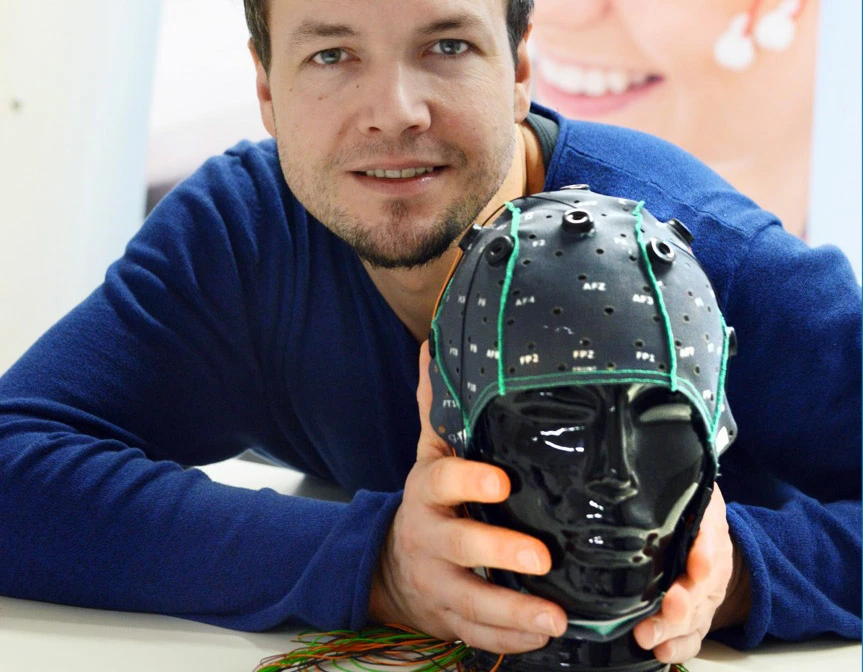Using the power of emotions
The Adlershof company Emolyzr measures emotions for other companies. They can be pivotal to the success of advertising and products.
The curve on the emotional barometer at the bottom of the picture rises steeply while a commercial shows a curly blond saying about his dad: “It’s a pity he can’t play football.” In the film, the little kid ineptly kicks a ball towards the goal and his dad purposely lets it through. A deep pink spot appears on the laughing child’s face – a sign of the positive emotions measured in the viewers.
Emolyzr uses this short commercial of a cosmetics manufacturer on the company website to demonstrate its analysis methods. “Measuring emotions is our core business,” says managing director André Weinreich. The psychologist researched the effects of emotions on the capacity for judgement and decision-making at Humboldt-Universität zu Berlin (HU) and has founded a start-up with two others in 2013. Their offices in Rudower Chaussee in Adlershof are in the immediate vicinity of the HU Institute of Psychology. Weinreich and his colleagues have developed a special set of tools for making emotions measurable. An eye tracker records an eye’s movement when looking at an image, film, or website and, specifically, where its gaze lingers. The test persons are covered all over with wires: facial electrodes and biosensors record non-visible emotional impulses; probes on their fingers measure skin moisture and provide information on brain activity. By way of these tools, a change in the viewers’ emotions, such as the one during the father-son commercial, can be measured with great accuracy.
“Our method can capture emotions that wouldn’t be trackable with a questionnaire,” explains Weinreich. A considerable part of our emotional reactions happen unconsciously, but still have a considerable effect on us. The young company’s customers are mostly from the communications sector. Apart from design and advertising agencies, they also include a number of insurance companies. “Emotions play a very important role in deciding whether I like a product or whether I will revisit a website,” says Weinreich. Emolyzr helps its customers to find out how to improve the reaction of their target groups. At least 20 test persons are wired to the emotional barometer and are confronted with a product, for example, a short clip or commercial. The analysis of all the emotional data shows what works and what doesn’t. A logo displayed in the wrong part of the screen can quickly let the level of emotion slip from positive pink into negative blue. “That’s when you know something needs to be changed,” says Weinreich.
The services offered by Emolyzr not only include measurements, but also advisory services: “We try to use our psychological skills to find out how our customers can better communicate with their customers.” Weinreich and his colleagues are already exploring further applications of their emotional measurements: one is to help people with mental problems to identify which inputs trigger negative reactions in order to have more control over their inner emotions. The project has only recently been launched, but Weinreich is already convinced that it will be a success: “Emotions are partly conditioned reactions, but they can also be unlearned.”
Von Claudia Wessling für Adlershof Journal
